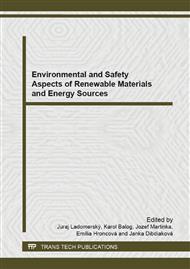p.141
p.149
p.155
p.162
p.171
p.177
p.183
p.187
p.194
Research of Possibilities of Using the Recycled Materials Based on Rubber and Textiles Combined with Vermiculite Material in the Area of Noise Reduction
Abstract:
This paper describes possibilities in the use of recycled rubber granules and textile materials combined with vermiculite panel. The aim of the research is the application of materials that will be absorbing or reflecting sound energy. This objective is based on fundamental physical principles of materials research and acoustics. Method of measurement of sound absorption coefficient is based on the principle of standing wave in the impedance tube. With a sound level meter is measured maximum and minimum sound pressure level of standing wave. From the maximum and minimum sound pressure level of standing wave is calculated sound absorption coefficient αn, which can take values from 0 to 1. Determination of the sound absorption coefficient has been set in 1/3 octave band and in the frequency range from 50 Hz to 2000 Hz. In conclusion are proposed possibilities of application of these materials in terms of their mechanical and physical parameters.
Info:
Periodical:
Pages:
171-176
Citation:
Online since:
August 2014
Authors:
Price:
Сopyright:
© 2014 Trans Tech Publications Ltd. All Rights Reserved
Share:
Citation:


